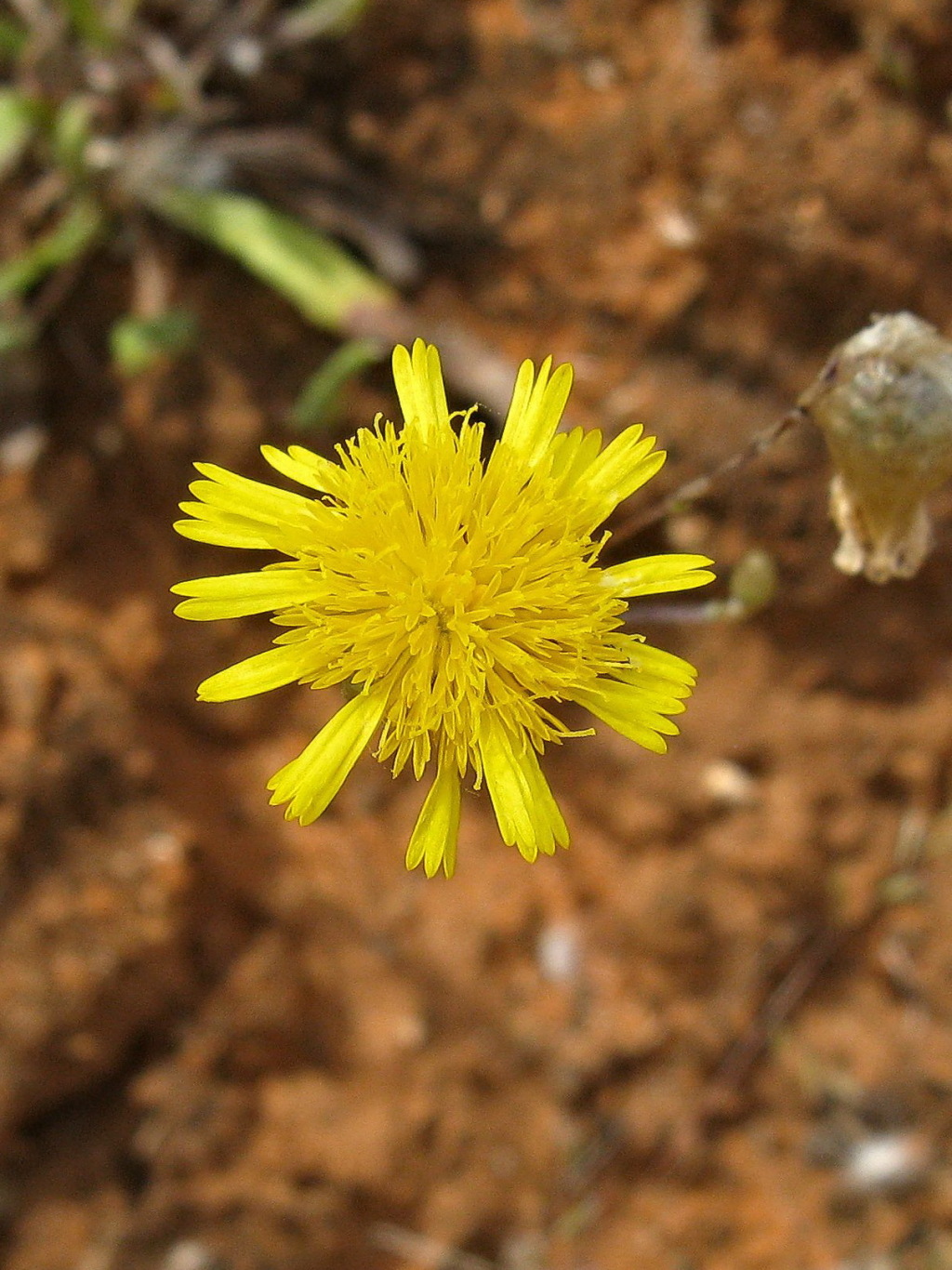Podolepis aristata subsp. affinis
(Sond.) JeanesErect, simple or branched, wiry annual herb, to 40 cm high; stems sparsely woolly to glabrescent. Leaves woolly to cobwebbed, less densely so above, margins flat to revolute, entire; basal leaves often withered at anthesis, usually oblanceolate, to 12 cm long and 15 mm wide, petiolate, base amplexicaul, apex acute; cauline leaves linear-lanceolate, 1–12 cm long, 3–15 mm wide, sessile, stem-clasping, apex acute. Capitula hemispherical, 10–20(–25) mm diam., many in short cymes, rarely solitary; peduncles 1–6 cm long; involucral bracts with slender linear, glandular claws; lamina more or less triangular to ovate, acute to shortly acuminate, scarious, transversely rugose at least distally, shiny; intermediate bracts 6–12 mm long, with linear glandular claws shorter than the lamina; inner bracts long-clawed. Florets yellow; ray florets 20–30, 10–20 mm long; disc florets numerous. Cypselas 1.5–2 mm long; pappus bristles 15–20, free, 4–8 mm long. Flowers Aug.–Nov.
LoM, MuM, Wim, VRiv, MuF, Gold. Occurs also in WA, SA, Qld, NSW. In Victoria, confined to the north-west, mostly in sandy mallee communities, but also on loam or clay soils in woodland.
Previously confused with P. canescens, a species endemic to north-eastern New South Wales.
Podolepis aristata subsp. aristata and P. aristata subsp. auriculata differ in having aristate apices on the involucral bracts, and the former also has smooth involucral bract laminas.
 Spinning
Spinning

